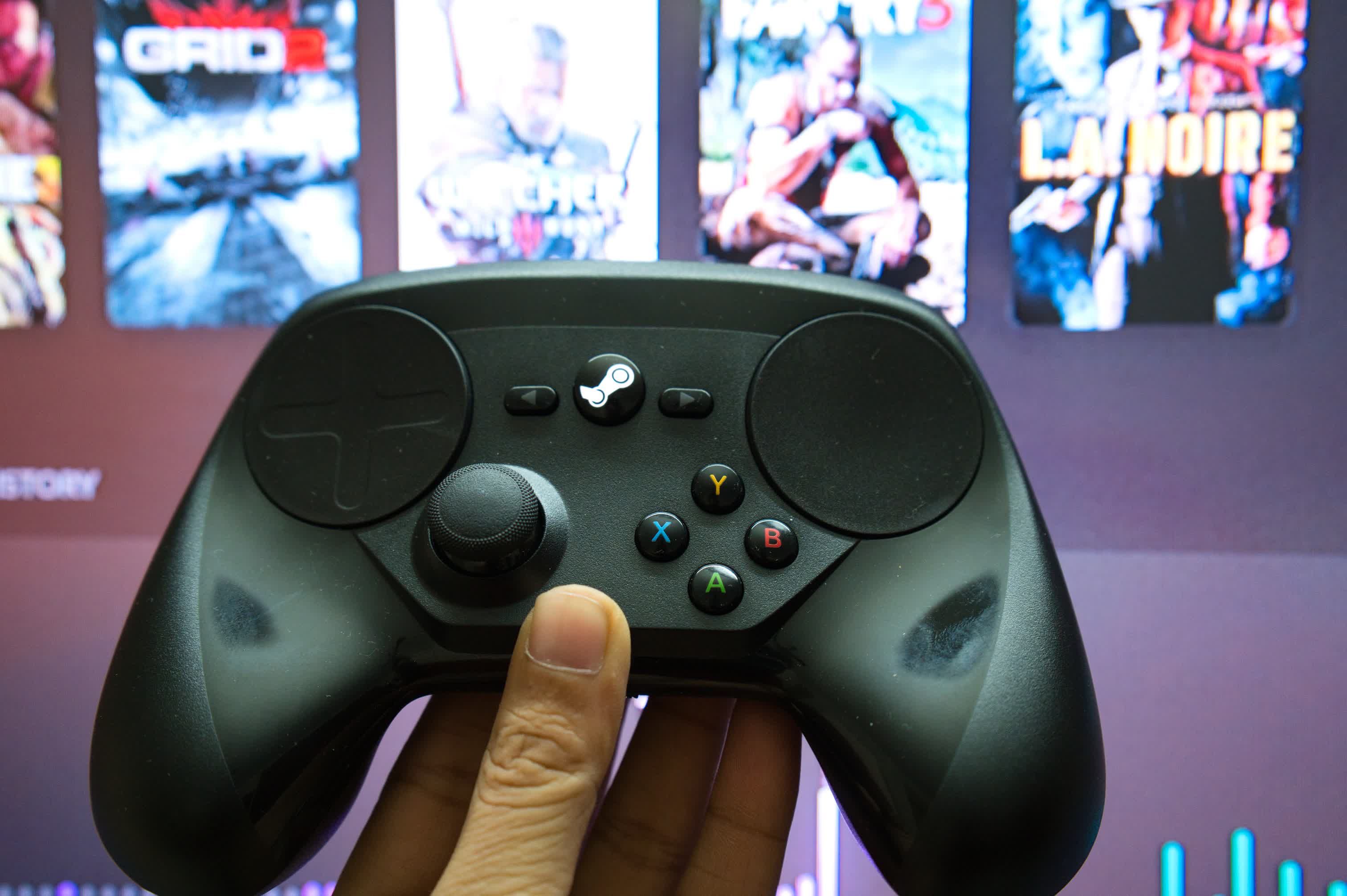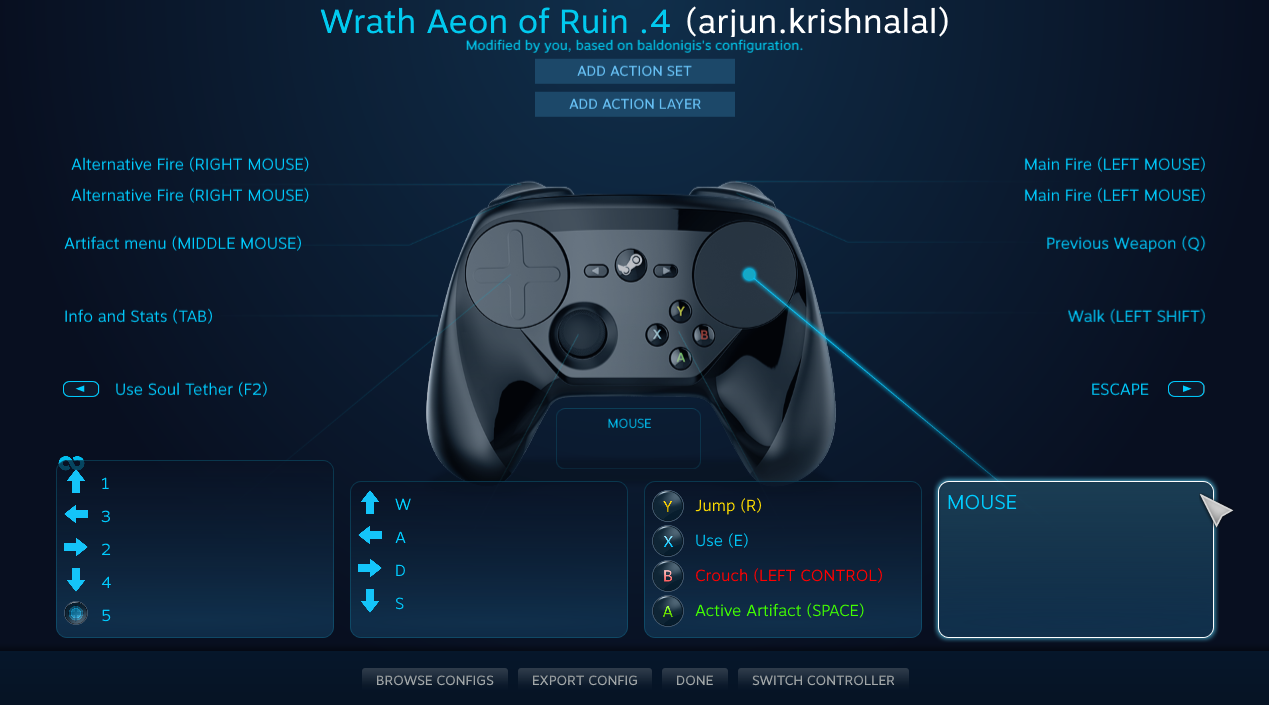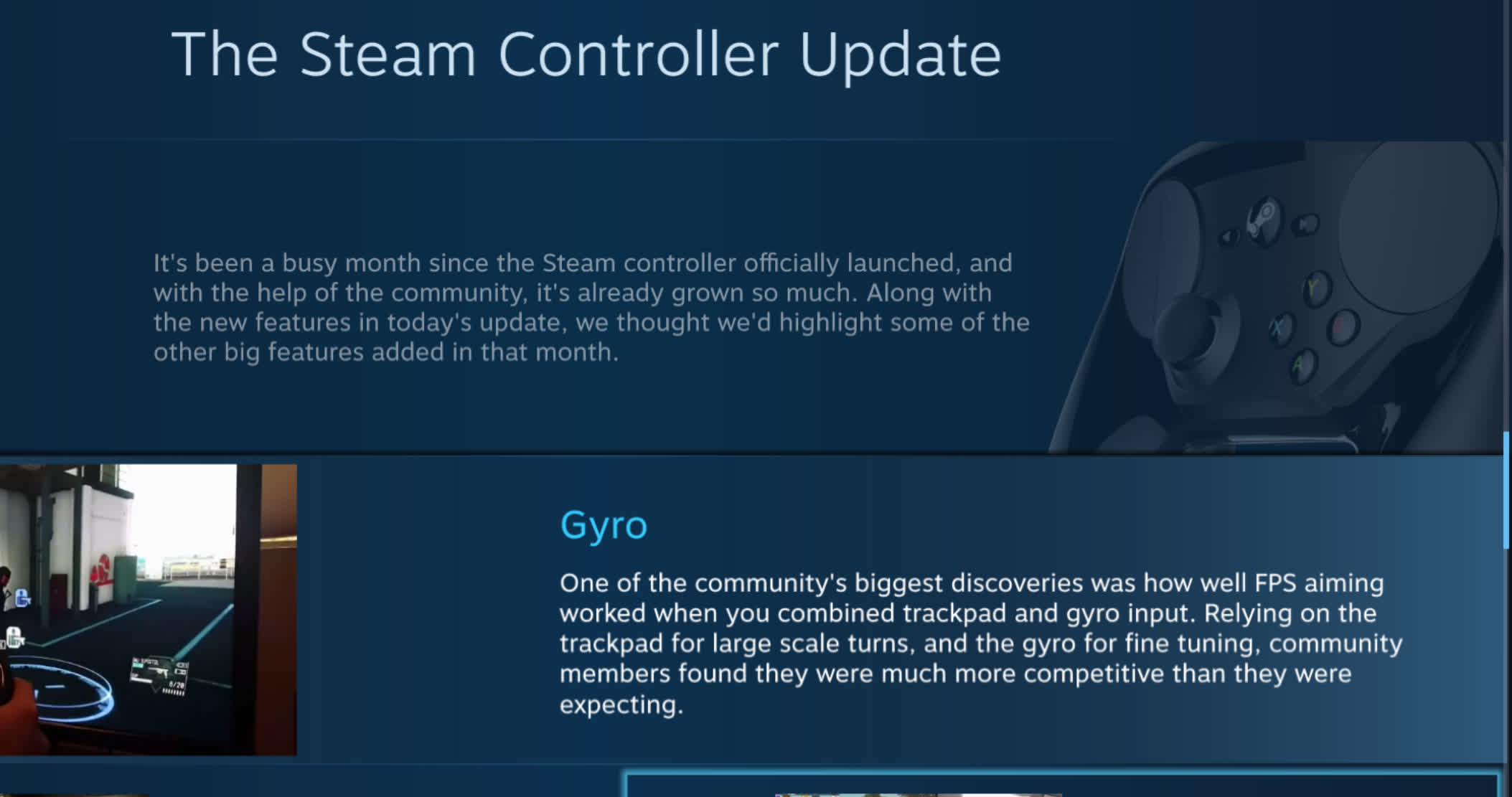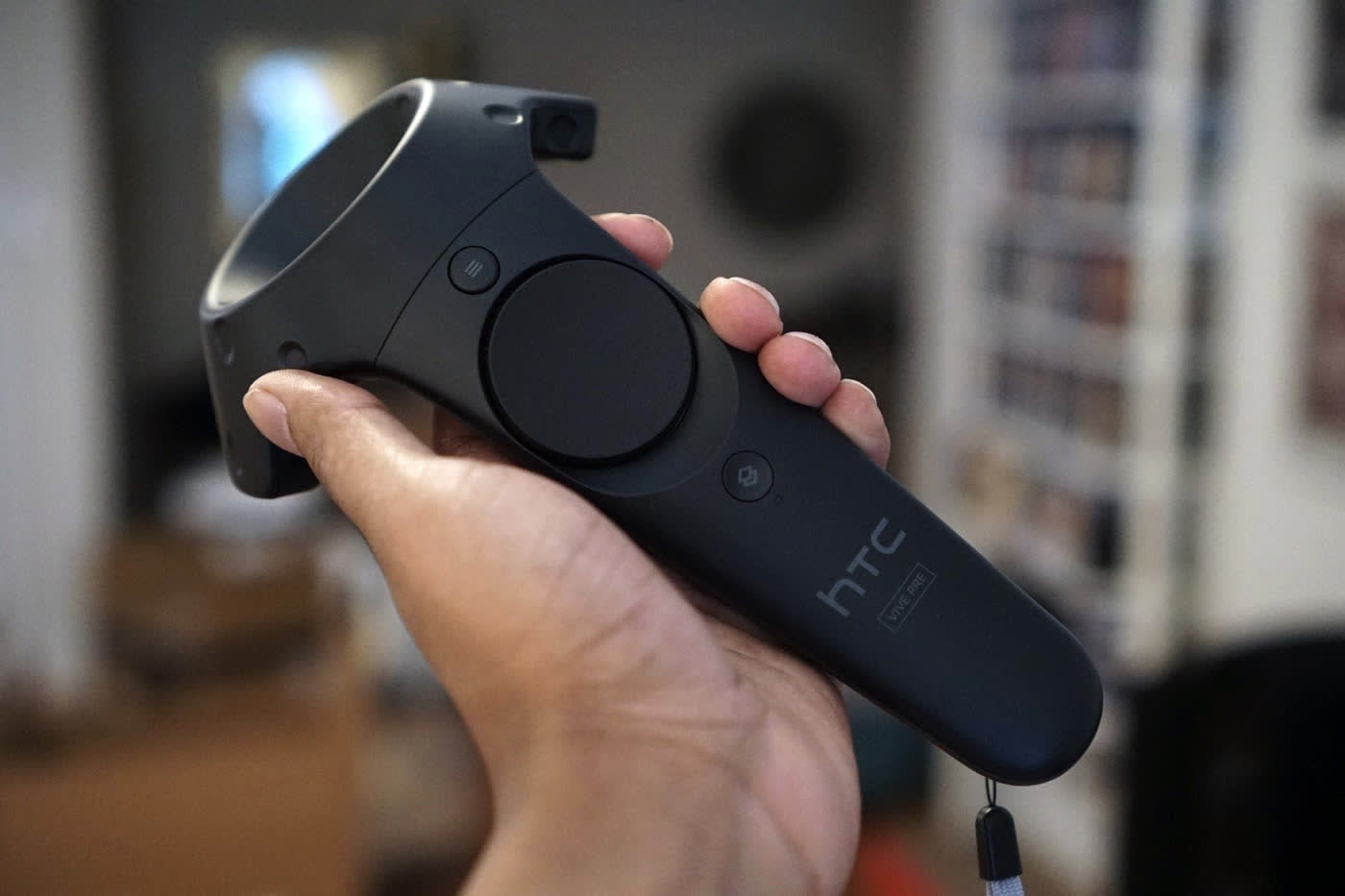I have a confession to make: I've spent several hundred dollars on Steam Controllers
No, I'm not crazy, and I'm not a collector of failed tech, either. Over the past five years, the Steam Controller has been my go-to device for PC gaming from the couch. I've tried Microsoft's controller, the DualShock and DualSense, and even the Nintendo Switch Pro Controller. None come even close.
Valve killed off the Steam Controller last year. It was widely seen as a commercial failure – which it was, with a mere 500,000 lifetime units sold. But, more unfairly, it's been characterized as a "bad" controller, with reviews criticizing everything from build quality to software, and the process of just getting the damn thing to work.
Some of this is justified.
But the rest is the story of how a poor launch-day experience and impatient reviewers murdered what could have been the biggest paradigm shift in gaming input since Sony introduced dual analog sticks with the 1997 Dualshock.

A well-loved Steam Controller - Image: ALensAndSomeLuck
But, what went wrong with the Steam Controller? Is it as bad as initial reviews made it out to be? And what does the future hold for the new technologies it introduced?
You're using it wrong! The case of the missing gyroscope
- It offers a mediocre gaming experience the majority of the time – IGN
- Everytime I put it head-to-head against a standard Xbox 360 controller, Microsoft's stock gamepad came out ahead – TechRadar
- This was what they came up with? There really wasn't a better way? – PC Gamer
When the Steam Controller launched in 2015, reviewers across the industry panned it, not just for being hard to use, but somehow less accurate than a standard controller with dual analog sticks.
Going through initial reviews, one key area stands out on account of its omission: apart from an Engadget writeup, almost no one who reviewed the Steam Controller at launch appeared to have any idea about how gyroscopic aiming works on it.
Gyro aiming is critical to the Steam Controller experience
Gyro aiming on the Steam Controller isn't a Sixaxis-style gimmick: it works in tandem with the right touchpad to provide mouse-like accuracy. In almost all initial Steam Controller reviews, reviewers appeared to use the Steam controller with gyro aiming disabled, relying just on the trackpads.
It's hard to emphasize this enough: gyro aim is a critical part of the Steam Controller experience.
In first-person shooters, users are supposed to use the trackpads to flick their view in the general direction of a target, then use the gyro for fine aim. By default, the gyroscope is enabled on "right pad touch." It only activates when your thumb flicks the right pad. The trackpads themselves are designed for flick-aiming speed, not accuracy: flicking the right touchpad is meant to get your scope in the general vicinity of a target, far faster than an analog stick. Once you're plus/minus a few pixels from your target, the gyro kicks in to help you line up that headshot.

Reviews, like this one on IGN, bemoaned how difficult it was to aim with the Steam Controller's touchpad in games like GTA V. The touchpad is only one half of the Steam Controller experience. Using it without gyro aiming enabled will cripple your accuracy.
Rather hilariously, the New York Times declared "after 15 hours of research and testing," that the DualShock 4 was the best PC gaming controller, saying they would not recommend the Steam Controller "until Valve releases better hardware."
Imagine giving a caveman a revolver: he'll shoot himself and tell you what a terrible club it makes. That analogy is, perhaps, the best fit for the Steam Controller's launch-day, gyro-free review debacle. It wasn't that the Steam Controller was a shoddy piece of hardware. Valve just failed to communicate who it was for and how it actually worked.
A lack of communication
Gyroscopic aiming is a complete paradigm shift and Valve apparently didn't feel the need to educate the public or users about it prior to the controller's launch. And that, most certainly, is their fault. Take a look at this Steam Big Picture news update, from one month after the Steam Controller's launch:
"One of the community's biggest discoveries was how well FPS aiming worked when you combined trackpad and gyro input."

It seems that Valve itself wasn't fully aware about the importance of gyro aiming, at least at launch. Valve talked about the Steam Controller's gyroscope, and button/input remapping before release. However, they never seem to have put two and two together until after release. Community members, presumably disappointed with the poor accuracy of touchpad aiming were the ones who later discovered the trackpad + gyro combination.
While YouTube videos of gyro aiming and post-launch review follow-ups helped with damage control, by the end of 2015, it was already too late. Gamers saw the Steam Controller as a failed piece of hardware and that lack of confidence led to its eventual commercial failure.
Software and compatibility issues: too little improvement, too late
When it actually works, the Steam Controller is a thing of wonder. The problem, though, is that Valve's launch-day firmware and Steam Big Picture software simply weren't mature enough. Over the years, iterative updates and community-built solutions like GloSc, have almost completely addressed these issues.
But at launch, and for at least a year afterward, the Steam Controller software and compatibility experience was finicky. Doom was the first game I ran on the Steam Controller, and it was a flawless experience: simultaneous controller/keyboard input worked, as did vibration. The big picture overlay didn't glitch out and gyro-touchpad aiming was decadently smooth at 100+ FPS.
Just about every other game had some sort of problem: the gyroscope wouldn't work in GTA V, the Big Picture Overlay wouldn't show up in some games, others like Fallout 4 didn't support simultaneous keyboard/controller input, forcing me to use the cumbersome "mouse-joystick" fallback option.

SteamGridDBManager enables seamless Steam Controller support in Epic and Uplay games
Plenty of games simply refused to work with the Steam Controller at all. This was in mid-2016, nearly a year after the Steam Controller came out. It's painful to imagine what the launch day software experience would've been like.
I'd taken a year off from gaming and only took my (worn and dusty) Steam Controller out of the cupboard sometime in late 2018. By that time, the software had matured immensely. As far as actual Steam games were concerned, compatibility issues were a thing of the past. Small quality-of-life improvements, like enabling Steam Controller bindings without having to run Big Picture mode, made for a seamless experience. Getting non-Steam games to work was still a bit of an issue: games that launched through uPlay and Origin were hit and miss, and Microsoft Store titles wouldn't work at all.
Thankfully, a plethora of community solutions were now available. SteamGridDBManager adds games from other storefronts to your Steam collection, without the compatibility issues that arise when using Steam's own "add a non-Steam game" function. And Alia5's GloSC (Global Steam Controller) enabled Steam Big Picture controller bindings globally, across Windows. This eliminated any remaining compatibility issues and made it possible to play Microsoft Store games with ease.
What's next?
As far as I'm concerned, the way forward right now is to track down unopened, new Steam Controllers on eBay, and to stock up. My first Steam Controller lasted a good five years, putting to rest the build quality issues raised in many launch-day reviews. My current one and a backup or two should last, at least as long as controllers themselves are relevant input devices for gaming.
But in the bigger scheme of things, the best thing to do would be looking at the impact Valve's device has had on controller design. Even in 2021, the Steam Controller is ahead of its time. Sony, Microsoft, and Nintendo have all taken pages out of Valve's book.
The Switch Pro and DualSense both feature HD haptics and accurate gyro aiming, the Xbox Elite controller features customizable paddles below L2/R2, the HTC Vive controller features dual trackpads. Valve themselves have opened up control remapping – one of the Steam Controller's highlights – to all controllers that work on PC.

The HTC Vive's controller has touchpads that are strongly reminiscent of the ones on the Steam Controller
Bits and pieces of the Steam Controller's legacy can be found in every modern controller. When all of that came together in the Steam Controller, it was villainized. As Engadget put it, "we hate Valve's Steam Controller because it's different."
Less than two million Steam Controllers have been sold over the past five years. Even in 2016 – the device's heyday – Valve reported just 27,000 units in active, daily use.
Recent patents indicate that Valve might be working on a new Steam Controller with swappable components. Patents don't always turn into products, though. Waiting for a new Steam Controller could end up being like waiting for Half Life 3. Nevertheless, there's always hope, and the possibility that we'll see more touchpad based controllers in the years to come.
In the meantime, my Steam Controller's got a couple more years left in it.
Masthead credit: 3dartistav
友链
外链
互链
Copyright © 2023 Powered by
I have a confession to make: I've spent several hundred dollars on Steam Controllers-山眉水眼网
sitemap
文章
2624
浏览
4949
获赞
5
热门推荐
Monstrously fun knit masks encourage social distancing
Face mask style is a thing, and one Reykjavík designer has seriously upped the ante.The artisMinimalist proposals and weddings spread joy in coronavirus pandemic
Proposing to a significant other, planning a wedding, or getting married in the middle of a pandemicTikTok love story documents next
Social distancing has made dating more complicated, but that doesn't mean it's off the table entirelYou can now use Google Assistant to bug your housemates to do their chores
Imagine you're going about your day when a notification pops up on your phone: "From [roommate's namObama includes 'Old Town Road' in his favorite music of the year
Barack Obama is releasing his end of year lists, and his favorite songs of 2019 are all absolute banPolice implement a solution to swatting, and it's spreading
Andrew Finch was shot dead by police on Dec. 28, 2017. Officials hope a new system will prevent a siMinimalist proposals and weddings spread joy in coronavirus pandemic
Proposing to a significant other, planning a wedding, or getting married in the middle of a pandemicBest YouTube videos to help you make a DIY face mask
Now that the CDC is recommending we all wear cloth face masks in public, you may be wondering how exHere's how to *hypothetically* take down a racist statue with tips from an archaeologist
As protests inspired by the Black Lives Matter movement continue, people across the country are callApple might bring Touch ID back on iPhones in 2021
The iPhone X boldly killed Touch ID and replaced it with Face ID, but fear not: Apple might bring thHack an iPhone and Apple will give you $1 million
Apple has expanded its bug bounty program, increasing the rewards for security researchers who can pSex toy sales are skyrocketing because of social distancing
The weeks of social distancing are dragging on. We see our friends on Zoom, and treat our Hinge matcGig workers to companies after BLM statements: 'Prove it'
Black gig workers are calling out the empty gestures of solidarity and support from the companies thFormer astronaut more worried about dying in hospital than on a rocket
Dr. Bill Fisher blasted off Earth in 1985 aboard a NASA space shuttle, speeding 18,000 mph through tNew Alexa smart speaker skill plays music for your dog
"Who let the dogs out? Woof! Woof!"That's one of the songs (along with any other remixes of the Baha
 科技创新!
科技创新!